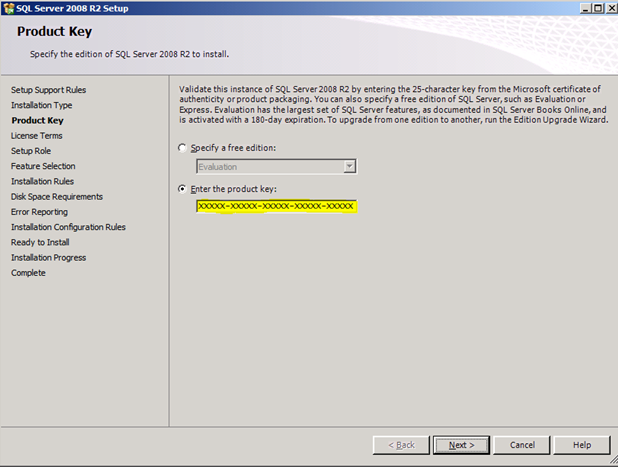

- #COMPARE MS SQL 2008 EXPRESS AND SQL 2012 EXPRESS UPDATE#
- #COMPARE MS SQL 2008 EXPRESS AND SQL 2012 EXPRESS WINDOWS 7#
- #COMPARE MS SQL 2008 EXPRESS AND SQL 2012 EXPRESS WINDOWS#
#COMPARE MS SQL 2008 EXPRESS AND SQL 2012 EXPRESS UPDATE#
Only the most current versions are included because most customers upgrade to the latest Service Packs soon after they’re released.Īdded ePO 5.10 Update 13 General Availability details.Īdded ePO 5.10 Update 12 General Availability and ePO 5.10 Update 11 Hotfix 2 General Availability details.Īdded support for McAfee Agent (MA) 5.7.5Īdded ePO 5.10 Update 11 Hotfix 1 General Availability details.
#COMPARE MS SQL 2008 EXPRESS AND SQL 2012 EXPRESS WINDOWS#
The following tables detail our products supported for use on Windows workstations and server operating systems. But, some of the information is available only in Product Management statements published in the Knowledge Base. Most of the following information is available in the product installation guides and Readme.txt files. It's highly recommended that if you have SQL servers that reached or surpassed their end of life date, you update them as soon as possible.As Microsoft releases new operating systems or Service Packs, the original product guides might not reflect the current support policy for those platforms. Run the SQL Server End of Life Audit ReportĪfter the extended support date has passed, your SQL Servers might no longer be secure as they will not receive security updates. Our SQL Server End of Life Audit provides an overview of all the SQL Server installations in your network along with an indication of whether they have surpassed their extended support date. Run the SQL Server End of Life Audit Report Microsoft states that with a minor change within the code, you can host SQL Server 2008 or SQL Server 2008 R2 to an Azure SQL database. Exchange Online, as part of Office 365 or Azure SQL Database, are great examples of Microsoft's modern approach to mainstream server applications. The cloud is evergreen and allows you to scale up or down as required, paying only for what you consume. Through upgrading legacy on-premise database technology, businesses consolidate their environment and optimize performance, recovery, and provisioning. The main recommendation is migrating the on-premise Microsoft SQL workloads into the Microsoft Azure cloud. By upgrading your installations, you'll have access to updates for 10 years. Upgrade to SQL Server 2017Īnother path forward is to simply upgrade to more recent versions of these products: SQL Server 2017. This is an option that is available to clients using SQL Server or Windows Server with an active license, although it's merely postponing troubles. Additionally, purchasing extended support is a very costly, very temporary solution. These security updates include critical and important security updates, but no new features, or customer-requested non-security updates. The easiest thing to do if your organization has missed an EOL deadline is purchasing Extended Security Updates from Microsoft. Update to a more recent version of SQL Server.Run the SQL Server Compact 4.0 End of Life Audit Report What are my options? The Microsoft Lifecycle Policy offered a total of 10 years of support (5 years Mainstream Support and 5 years Extended Support) for 20 R2 versions of SQL Server and Windows Server.
#COMPARE MS SQL 2008 EXPRESS AND SQL 2012 EXPRESS WINDOWS 7#
SQL Server 2008 and SQL Server 2008 R2 reached their end of support on July 9, 2019, while Windows Server 2008 and Windows Server 2008 R2 reached their deadline together with Windows 7 on January 14, 2020. These risks will only grow over time, so it's vital you take action. If you're using any of these products and do nothing, it's almost certain that your risks around security and compliance will increase, which may also impact productivity. Once a product reaches its 'Extended Support End Date' there will be no patches, security updates or support from Microsoft. All warranty claims end and they will no longer accept feature and change requests. Why should I care?Īt the end of mainstream support, Microsoft will no longer provide non-security hotfixes unless you have an extended support agreement. Each version of SQL Server usually has both an end of support date and an end of extended support date. Microsoft outlines the end of life dates for all of their products to make customers aware of when they will cease support for specific products. But no worries because we got you covered with this guide. And soon, a few SQL Server versions will go End of Life. As its name suggests, it is used to manage the databases you use for your business. SQL Server and SQL Server Compact is Microsoft's relational database management system (RDMS) application.


 0 kommentar(er)
0 kommentar(er)
